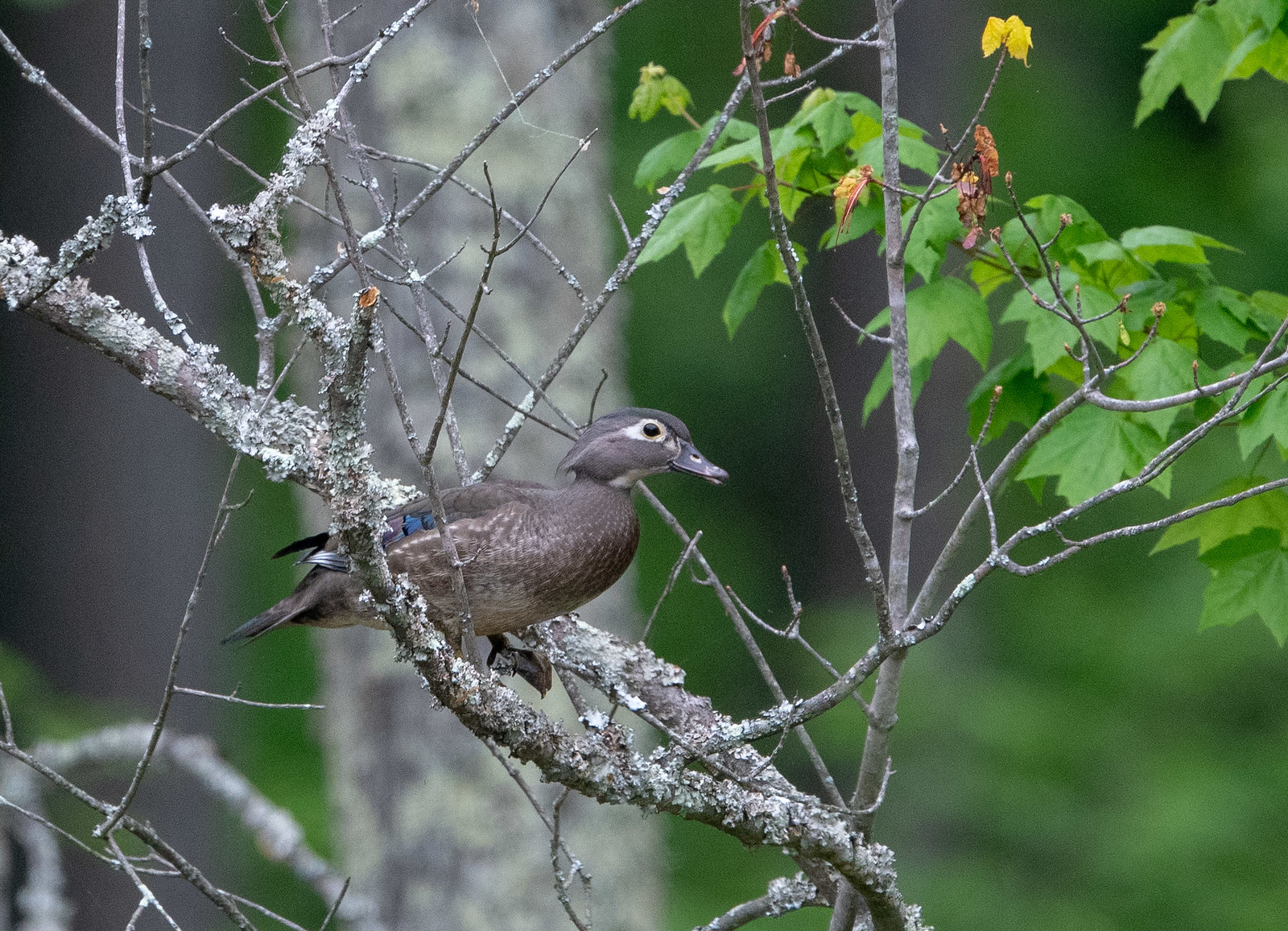| Infrequently Seen |
Wood Ducks are among the most beautiful bird species in the world. They are infrequent visitors to Monticello Park.
Where to See Them in the Park

You sometimes can see one or a pair of Wood Ducks perched in a bare tree. Monticello does not have the habitat preferred by Wood Ducks, and there is no reliable place to see them in the park. A much more reliable place to see Wood Ducks is at Huntley Meadows Park.
Physical Description

Male Wood Ducks are almost too colorful to describe. No other species looks like them. In addition to the plumage of many colors, the males have a bright red bill with a white mark on it. They have a round head and a crest that droops in the back like a ponytail. The throat has a white bridle, with arms that extend to the face and neck.

The female is mostly gray with white mottling. One of her most distinctive fieldmarks is the white skin around her eye. Like the male, she has a crest that sticks out of the back of her head. She has a blue patch (speculum) on her wing.
Vocalizations
if distrubed, the female squeals like a puppy who has been stepped on. The male utters a thin whistle that rises and falls.
Hear the vocalizations of the Wood Duck.
Notes
Wood Ducks nest in the Washington area. During the breeding season, you sometimes can see a mother and a long line of duckings swimming at Huntley Meadows Park. The park has put up boxes for them to nest in. In the absence of nest boxes, Wood Ducks nest in holes in trees. A day after the young hatch, they are ready to leave the nest. Some of the nest holes are fairly high up. Because the ducklings weigh very little, they can fall long distances and land without being hurt.
Origin of Names
Common Names: Wood because they nest in trees. Duck from the Anglo-Saxon for diver.
Genus Name: Aix is Greek for a kind of waterfowl.
Species Name: Sponsa means betrothed or dressed for a wedding, because of the male's plumage.
Wood Duck video footage
Return to the Index
